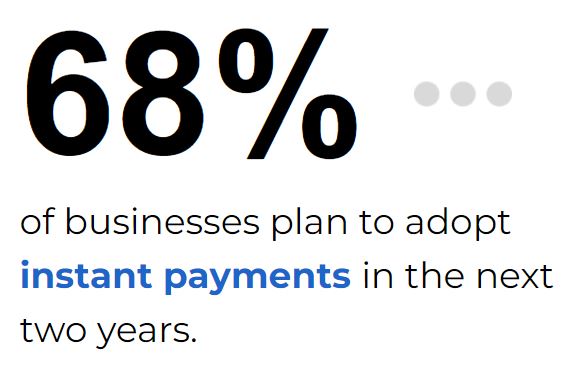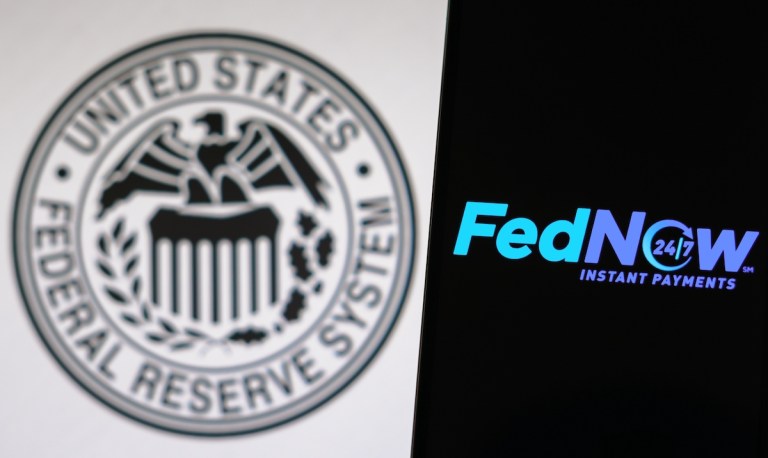Despite widespread enthusiasm, however, the transition from traditional payment methods to real-time systems like the Federal Reserve’s FedNow® Service and The Clearing House’s RTP® network is experiencing hurdles.
The PYMNTS Intelligence report “Are Challenges Still Holding Back Instant Payments Adoption in the US?” examined the enduring use of older payment methods and the complex requirements for adopting instant payment technology.
Embracing Instant Payments: Current Trends and Persistent Challenges
Businesses and consumers support instant payments, driven by a desire for faster, more efficient transactions. A study from U.S. Bank showed that more than 40% of companies with revenues exceeding $100 million are already using the RTP network.

Looking forward, 68% of businesses plan to adopt instant payments via RTP or FedNow within the next two years. This enthusiasm spans various sectors, including 81% in consumer and retail, 75% in hospitality and leisure, and 70% in healthcare. These figures highlight a recognition of instant payments’ potential to enhance liquidity management and boost customer and vendor engagement.
Despite this momentum, traditional payment methods remain prevalent. According to the report, checks still account for 15% of B2B payments for retailers and manufacturers and 21% for real estate transactions. This persistence indicates that while the benefits of instant payments are acknowledged, full transition is still underway.
Advertisement: Scroll to Continue
Consumer preference for instant payments is also strong when given the choice. Seventy-two percent of consumers opt for instant payments when offered, with preference rising to 77% for income payouts. Sixty-two percent of those not offered instant payments would have chosen them if available, underscoring a demand for real-time solutions.
The Growing Impact of FedNow and RTP on Real-Time Payments
The rollout of FedNow alongside RTP is progressively integrating instant payments into the financial landscape, signaling a promising future for this payment method. More than 480 financial institutions participate in RTP, and more than 900 are involved with FedNow. FedNow’s introduction has accelerated the adoption of real-time payments by facilitating diverse use cases such as payroll, loan disbursements and insurance claims.
For instance, Plaid’s partnership with Cross River Bank demonstrates how FedNow can enhance financial services, including microdeposits, which reduce the time needed for account verification and minimize payment failures. Astra’s integration of FedNow highlights how instant payment rails can streamline various payment types and provide a unified payment experience. Instant payments could revolutionize the management of margin calls in securities trading. By enabling instantaneous notification and settlement of margin calls, FedNow could reduce the market risk associated with delays in traditional payment processes.
Overcoming Barriers in Adopting Instant Payments
The integration of instant payment rails presents challenges. Financial institutions face technological and operational hurdles with systems like FedNow, requiring upgrades to existing technology. The report showed that 34% of FinTechs cite a lack of anti-financial crime expertise as a barrier. Costs also complicate adoption, as 82% of smaller insurance firms are deterred by high upgrade costs, and 48% worry about fraud and data theft risks.
Addressing these barriers requires strategic approaches, including simplifying integration with clear technical guides, encouraging dual-pathway innovation, and developing modular, scalable solutions. These strategies can help financial institutions and FinTechs overcome obstacles and advance the instant payments landscape.

